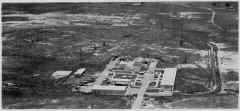Click for pdf copy
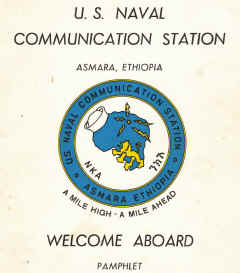
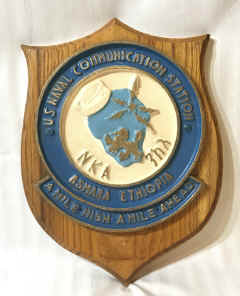
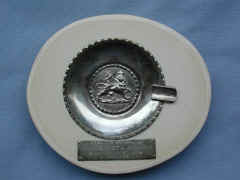
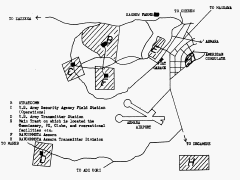
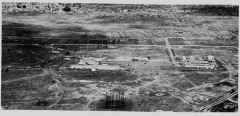
After the termination of hostilities in World War II, the Navy set out to establish a communication link for the Red Sea and Indian Ocean area. Asmara, Ethiopia was selected as the site of the vital link.
Initially a very small command, the Navy facility, NAVCOMMUNIT THREE, in Asmara, gradually expanded and by 1958 we had a total of 3 officers, 1 warrant and 68 enlisted men stationed here. Kagnew Station was much smaller then and the men had to more or less create their own forms of entertainment. Hunting was not restricted at that time and it was by far the most popular pastime. The Navy operated a hunting camp about sixty miles northwest of Asmara at Agordat. Kagnew Station operated recreation centers in both Cheren and Massawa for the use of American military personnel.
Not all the fun seemed to be in hunting the animals as could be witnessed by the assortment of Navy mascots. At that time, we maintained six dogs, one gazelle, two wild pigs, a jackal and a varied assortment of monkeys and baboons. One of these monkeys earned quite a reputation for himself by climbing a tree every day and throwing rocks down on the roof of the Commanding Officer's house.
The Navy started expanding rapidly in 1958. We moved our transmitter site from near where the present Stonehouse is situated to Tract "D". 1959, the Navy started its own Communication Control facility. Up until that time, all of our circuits were completely handled by the Army.
Our first Supply Officer arrived in 1960. Although obtaining materials ,in a timely manner is still somewhat of a headache in this corner of the world, the continuous expansion of our Supply Department since that time has greatly alleviated many of our past problems. Through its Supply Department, NAVCOMMSTA Asmara now furnishes extensive logistics support for those ships of the Commander Middle East Force visiting Massawa.
With the construction completed on our receiver building in 1961, the Navy moved from a wing of the Army receiver site at Tract "C" to its present location at Tract "F". By this time, Navy personnel had increased to 5 officers, 1 warrant and 125 enlisted. ·
In June of 1961, the NAVCOMMUNIT Asmara was redesignated by the Chief of Naval Operations as a Naval Communication Station. This firmly established us as one of the most vital links in the world encircling chain of Naval Communications.
Project Patsy, the vanized complex to be established at Gura, was upon us almost before we knew it existed. After having received our first notification of it in September 1963, the vans arrived in Asmara in November of the same year. On 26 May 1966, the NAVCOMMSTA Transmitter Site Gura was officially opened. It is located some 30 miles south of Asmara.
The Public Works Department moved from Tract "A" into new facilities on Tract "F" in April 1968; the Supply Department moved to Tract "F" about October 1968; and, the offices of the Commanding Officer, Executive Officer, and the Administration Department made the final move in January 1969. The NAVCOMMSTA was now located in two exclusively Navy sites approximately 30 miles apart, with only the Navy barracks and the Disbursing Office on Army Site, Tract "E".
